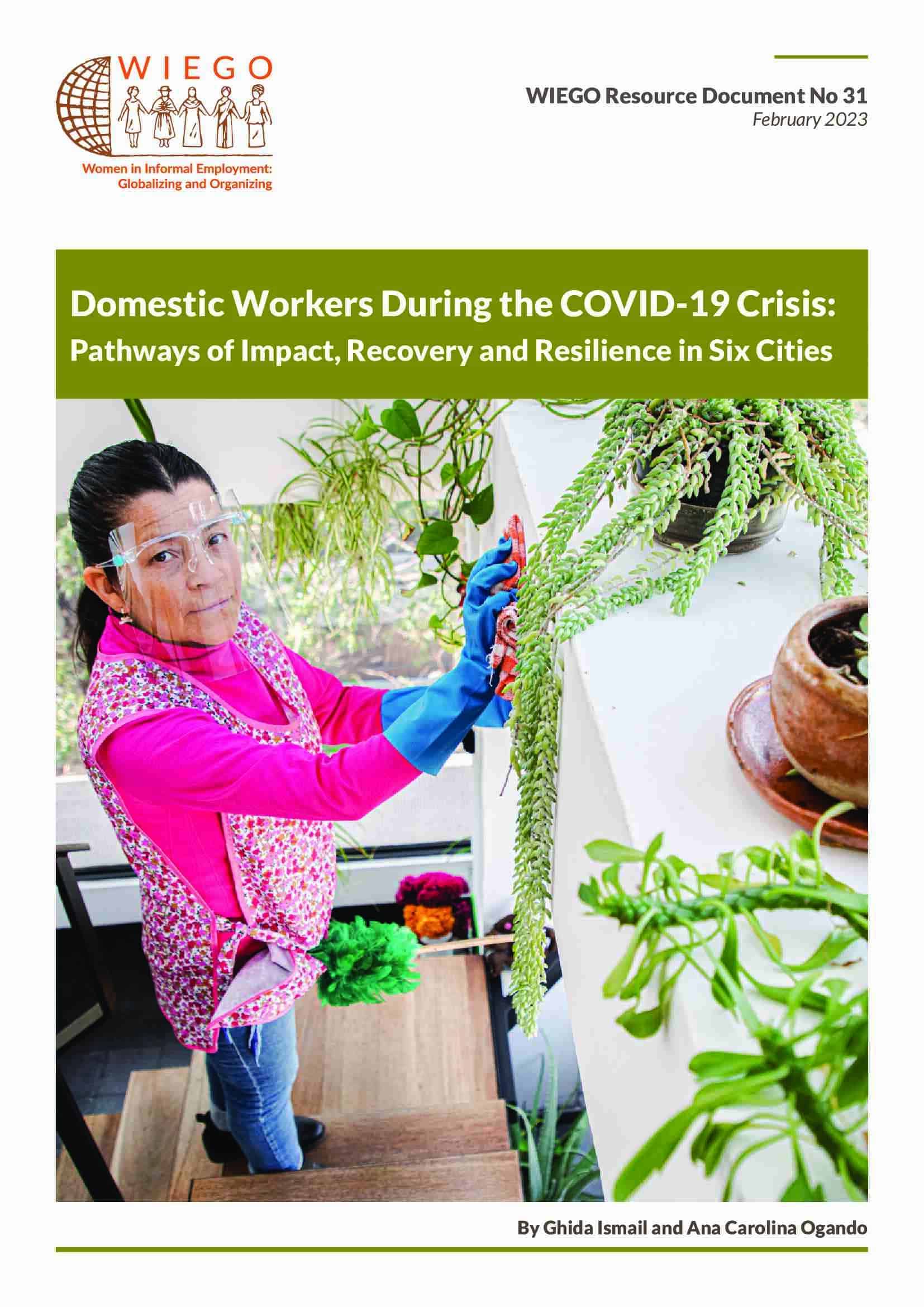Domestic Workers During the COVID-19 Crisis: Pathways of Impact, Recovery and Resilience in Six Cities
Key Findings
- Domestic workers’ ability to work and earn an income were negatively impacted throughout the pandemic and particularly at the onset of the study in April 2020.
- The inability to work and earnings recovery was more pronounced for live-out domestic workers compared to live-in domestic workers. Live-out domestic workers in five of six study cities (Ahmedabad, Bangkok, Delhi, Lima and Pleven) were reporting median earnings of zero or near zero in 2020. By mid-2021, earnings recovery of live-in domestic workers reached the pre-COVID-19 level and the earnings recovery of live-out domestic workers was 88% of the pre-COVID-19 level.
- Domestic workers across the six cities reported increased precarity in their working conditions due to reduced bargaining power, increased competition in the sector, and an increase in workload.
- Domestic workers confronted occupational health risks with strong reports of mental health strains two years into the pandemic. By mid-2021, 46% of domestic workers reported health concerns as the second-greatest obstacle to working. In cities with stronger second COVID-19 waves in 2021, reports of exposure to COVID-19 among domestic workers were also higher.
- Only one-third of domestic workers reported receiving cash and/or food relief from the government in the first three months of the pandemic and by mid-2021. Domestic workers reported being excluded from government relief, often resulting from the fact that their salaries were too low and work arrangements too unstable to benefit from social security, but too high to benefit from relief.
- Domestic worker organizations were quick to respond to their members’ needs and shift their organizational and communication strategies. Organizations provided a range of support that included immediate material relief at the onset of the pandemic to long-standing emotional and legal support as the pandemic endured.
View list of all: Resource Documents

